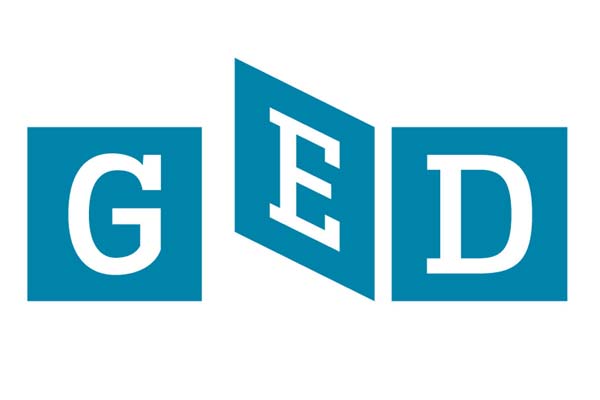High School Diploma vs GED: Which One Is Right for You?
Choosing between a High School Diploma and a GED? Let’s simplify. We’ll break down each, talk about the perks and drawbacks, and guide you toward the best fit. Ready? Let’s dive in!
Understanding High School Diploma
A high school diploma is granted to students who have completed their high school education, signifying their fulfillment of all school requirements and successful completion of necessary classes.
In a traditional high school setting, students must attend four-year classes. During this time, they take various classes, including core subjects like math, science, English, and social studies.
They may also have the opportunity to take electives, which are classes that allow them to explore their interests and passions.
High schools provide academic classes and extracurricular activities like sports, clubs, and volunteer opportunities.
These activities allow students to develop skills, build relationships, and have fun outside the classroom.
Understanding GED
The General Educational Development (GED) test is a high school equivalency diploma recognized in the United States and Canada.
Designed by the American Council on Education (ACE), the GED test evaluates knowledge and skills at a level comparable to a high school diploma. The test covers four subjects: Mathematical Reasoning, Reasoning Through Language Arts, Social Studies, and Science.
Each subject test measures the knowledge and skills required to pass high school courses in that subject area. The test is computer-based and takes approximately 7-8 hours to complete.
The Mathematical Reasoning test measures the ability to solve mathematical problems, interpret data, and use mathematical reasoning to solve problems. The test consists of 46 questions and takes 115 minutes to complete.
The Reasoning Through Language Arts test measures reading and understanding complex texts, analyzing arguments, and writing clearly and effectively. The test consists of 46 questions and takes 150 minutes to complete.
🌟 Hey Students! 🚀 Ready for the ultimate experience? Join us on Studentsinside.com's Facebook, YouTube, WhatsApp, and LinkedIn. Click now for tips, fun, and success vibes! 🌈✨ #StudentLife #JoinUs
The Social Studies test measures the ability to understand and analyze historical events, government, economics, and geography. The test consists of 35 questions and takes 90 minutes to complete.
The Science test measures understanding and analyzing scientific concepts and principles. The test consists of 34 questions and takes 90 minutes to complete.
To earn a GED credential, a candidate must score at least 145 on each subject test and have a total score of at least 580. Employers and colleges recognize the GED credential as equivalent to a high school diploma.
However, some employers and colleges may prefer applicants with a traditional high school diploma.
Comparing High School Diploma and GED
When choosing between a high school diploma and a GED, it’s essential to understand the differences between the two options. Here’s a comparison of the two:
High School Diploma
Completing the necessary coursework and meeting graduation criteria in a school district earns students a high school diploma. This certificate indicates successful attendance and passing all required classes in a conventional high school environment.
Pros:
- A high school diploma is widely recognized and accepted by employers and colleges.
- It shows that a student has completed a full high school education.
- It may provide more opportunities for scholarships and financial aid.
Cons:
- It requires a student to attend high school for four years.
- It may be more challenging to obtain for students who need help with academically.
- It may not be feasible for students with other responsibilities, such as work or family obligations.
GED
A GED, or General Educational Development, is a high school equivalency diploma. It is awarded to individuals who have passed a series of tests that cover the basic information taught in high school.
Pros:
- A GED can be obtained without attending high school.
- It may be a faster option for individuals who need to enter the workforce or continue their education quickly.
- It may be a more flexible option for individuals who have other responsibilities.
Cons:
- A GED may not be recognized or accepted by all employers and colleges.
- It may be less desirable than a high school diploma.
- It may provide a different level of education than a traditional high school education.
Academic Requirements
A high school diploma and a GED require a certain level of academic achievement. While the specifics may vary depending on the state and program, both must meet general requirements.
For a high school diploma, students must complete several credits in various subjects, including language arts, math, social studies, and science.
Students may be required to complete specific courses, including algebra, geometry, and biology. Additionally, achieving a minimum score on standardized tests like the ACT or SAT may be necessary.
On the other hand, the GED tests four subject areas: mathematical reasoning, reasoning through language arts, social studies, and science.
Each subject area has its skills and knowledge that must be demonstrated—the GED measures the skills and knowledge typically acquired through four years of high school.
To prepare for either a high school diploma or a GED, students can take practice tests and work on developing their study skills. Many programs offer resources and support to help students succeed.
Career and College Opportunities
A high school diploma and a GED can open up opportunities for a successful career and postsecondary education. However, there are some differences in how employers and colleges view these credentials.
Candidates with a high school diploma are more favored by employers than those with a GED. 85% of employers, as revealed by a CareerBuilder survey, prefer hiring individuals who have completed high school.
This is because a high school diploma indicates that the candidate completed a full high school education and has the necessary skills and knowledge to succeed in the workforce.
However, some employers may still consider candidates with a GED, especially if they have relevant work experience and skills.
Regarding postsecondary education, a high school diploma and a GED can qualify a student to attend college or trade school.
However, some colleges and universities may prefer applicants with a high school diploma over those with a GED. Community colleges and trade schools may be more accepting of GED holders.
It’s important to note that while a high school diploma or GED may qualify a student to attend college, it does not guarantee admission.
When evaluating applicants, colleges and universities consider various factors, including GPA, extracurricular activities, and standardized test scores.
Age and Other Requirements
The age requirement is crucial when deciding between a high school diploma and a GED.
In the United States, high school education is available to students up to age 21 through the public school system.
After that, students may have to pursue alternative paths to earn a diploma or equivalent credential.
To earn a high school diploma, students typically must complete four years of high school coursework, including core subjects like English, math, science, and social studies.
They must also pass required exams and meet other state or school district requirements.
On the other hand, to earn a GED, students must be at least 16 years old and still need to complete a high school diploma.
You can’t be in high school right now to take the test, and you’ve got to go to a physical location for it. The good thing about the GED is that you can go for it whenever it suits you.
Sometimes, a GED may be better than a high school diploma.
For example, a GED may be a more viable option if a student needs to catch up in credits or has other obstacles preventing them from completing high school.
However, in many cases, a high school diploma is still the preferred credential for employers and colleges.
Financial Considerations
Financial considerations can play a significant role when deciding between a high school diploma and a GED. Consider these critical financial factors:
Cost
The cost is one of the most significant differences between obtaining a high school diploma and a GED. Getting a high school diploma is usually free while taking the GED exam typically comes with a cost.
The GED exam expense fluctuates by state, usually from $20 to $30 per subject. However, financial aid or fee waivers are available in certain states for those facing financial constraints.
Financial Aid
Financial aid is available to individuals who want to pursue higher education, regardless of whether they have a high school diploma or a GED.
However, some financial aid programs may require a high school diploma or equivalent for eligibility.
Researching the specific financial aid programs available is essential to determine whether a high school diploma or GED is required.
Salary and Earnings
Studies by the U.S. Census Bureau have shown that individuals with a high school diploma earn significantly more than those without one.
On average, individuals with a high school diploma earn about $10,000 more annually than those without one.
However, obtaining a GED can still provide higher-paying jobs and career advancement opportunities.
Career Advancement
A high school diploma is generally considered the standard for entry-level jobs, but a GED can also open doors to higher-paying jobs and career advancement.
A high school diploma or equivalent may be required for specific positions, although some roles might accept a GED as a suitable qualification.
However, some industries or employers may prefer a high school diploma over a GED.
Statistical Overview
In 2021, the U.S. Census Bureau reported that 29.4% of men aged 25 and older had finished high school or earned a GED as their highest level of education, while this figure was slightly lower at 26.5% for women aged 25 and older.
Additionally, of adults aged 25 and older who had completed a bachelor’s degree or more, 53.1% were women and 46.9% were men.
Completing a high school diploma or GED is the first step toward developing a career.
However, the difference in earning potential between a high school diploma and a GED is significant. U.S. Census Bureau data shows that average high school diploma holders earn roughly $4,700 per month, compared to GED holders who earn approximately $3,100 per month. This is a difference of $1,600 per month.
Having a high school diploma or GED is also necessary for job prospects. 322 occupations, such as a GED, typically require a high school diploma or the equivalent.
This is nearly twice as many occupations as at any other level of education. Table 2 shows occupations at the high school level projected to have the most openings annually, on average, from 2019 to 2029.
Soft, solid, and people skills are critical to work success. Research has found that 85% of job success comes from having these skills, not just good job opportunities.
Therefore, it is essential to not only have a high school diploma or GED but also to develop these skills to succeed in the workforce.








